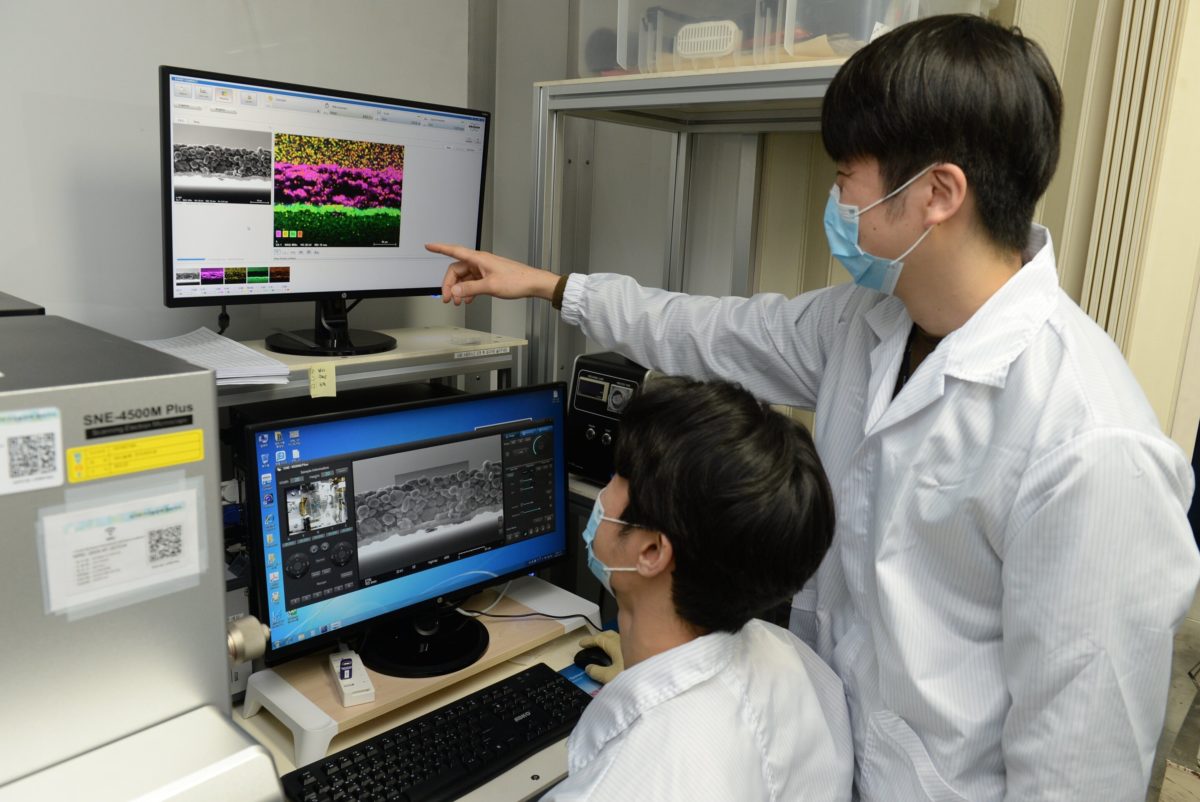Among a plethora of different pathways being investigated in energy storage, solid-state batteries are seen by many as the most promising technology to overcome well-documented issues in cost, long-term performance, and fire safety.
And within solid-state batteries, researchers are working on various different materials and device structures, each with its own set of challenges and advantages. Typically, these challenges lie in achieving sufficient conductivity and stability, as well as developing materials and processes for large-scale manufacturing.
Scientists at South Korea’s Electronics and Telecommunications Research Institute (ETRI) collaborated with a group at the Daegu Gyeongbuk Institute of Science and Technology (DGIST) to present a new approach to solid-state battery design, based on what they are calling Diffusion dependent all-solid-state electrodes.
Key to this approach was the discovery that ions can be transported between active graphite particles, meaning that an additive to increase ion conduction is not needed. This means electrodes need only contain the active storage material and a binder, which would allow for increased storage capacity, and potentially for simpler production owing to the presence of fewer materials and the opening up of more options for solvent and binder materials.
Scientists at ETRI took this theory to DGIST, which was able to confirm its feasibility using virtual modeling. ETRI was then able to demonstrate the structure in actual experiments. The work is described in the paper Diffusion-Dependent Graphite Electrode for All-Solid-State Batteries with Extremely High Energy Density, published in ACS Energy Letters.
“We have revealed for the first time that ions can be diffused just with active materials. We are no longer bound to the structure used in existing all-solid-state secondary cells,” said ETRI researcher Young-Gi Lee. “We plan to develop secondary cells with even high energy densities, using this technology. We will also secure our rights to the core technology and work on a version that could be commercialized.”
On the research side, ETRI further states that it plans to investigate whether the same approach can bring better performance to materials other than graphite, and will also work on the electrode interface to squeeze even more performance out of the batteries, and make the electrodes thinner.
This content is protected by copyright and may not be reused. If you want to cooperate with us and would like to reuse some of our content, please contact: editors@pv-magazine.com.




2 comments
By submitting this form you agree to pv magazine using your data for the purposes of publishing your comment.
Your personal data will only be disclosed or otherwise transmitted to third parties for the purposes of spam filtering or if this is necessary for technical maintenance of the website. Any other transfer to third parties will not take place unless this is justified on the basis of applicable data protection regulations or if pv magazine is legally obliged to do so.
You may revoke this consent at any time with effect for the future, in which case your personal data will be deleted immediately. Otherwise, your data will be deleted if pv magazine has processed your request or the purpose of data storage is fulfilled.
Further information on data privacy can be found in our Data Protection Policy.